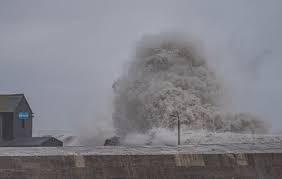How Qatar Persuaded Israel and Hamas to Adhere to a Truce
As international leaders praised Qatar for mediating a cease-fire between Israel and Hamas last week, its negotiators stepped up their efforts because they were worried the cease-fire might end before it had a chance to be implemented.
The terms of the ceasefire and the agreement to go forward with prisoner and hostage swaps were ambiguous. According to those acquainted with the high-stakes negotiations in Qatar, the Palestinian Territories, and Egypt, the negotiators for the small Gulf state were aware that Israel and Hamas still couldn’t agree on when or how the truce and exchange would start.
According to a source informed on the discussions, it was imperative to elucidate every aspect of the deal and ensure that it meant the same thing to Israel and Hamas. For instance, the Israeli side had promised to “park” the tanks it was employing within the Gaza Strip, but the source, who wished to remain anonymous due to the delicate nature of the discussions, said that no one had agreed on what that really meant in practice.
Career diplomat Abdullah Al Sulaiti, one of Qatar’s chief negotiators, was concerned. In an interview, he said, “I thought we were going to lose it and that the agreement wouldn’t fly.” According to a source informed on the discussions, Qatari Prime Minister Sheikh Mohammed bin Abdulrahman Al Thani had cleared his schedule, postponing travels to Moscow and London in order to stay focused.
Only hours after the cease-fire was announced, the source said that Sheikh Mohammed began fresh discussions inside one of his Doha offices on Wednesday, Nov. 22.
The Mossad leader, David Barnea, who had flown in from Israel for at least the third time since the start of the conflict, and a group of Egyptian intelligence agents attended the prime minister’s main meeting. According to the insider, the Qataris called Hamas representatives who were still at their villa office located across town using a different room. Reporters were informed by Qatar’s foreign ministry that Israel and Hamas had discussions in Doha until “the early morning” on November 23 and had decided on a strategy to carry out the cease-fire agreement the following day.
This narrative provides specifics of that historic nine-hour meeting that is being reported here for the first time. It also provides a peek into Qatar’s tough stance, which has accelerated shuttle-style conversations between “two parties that have zero level of confidence in each other,” according to one person participating in the talks.
In-depth inquiries for this piece were not answered by the US Department of State, the Qatari Ministry of Foreign Affairs, or the Hamas political office in Doha. Mossad is under the control of Israeli Prime Minister Benjamin Netanyahu’s office, which refused to comment.
NOT THE “POSTMEN”
According to Egyptian security sources and a U.S. official familiar with the situation, Qatar is taking a proactive approach to mediation by actively participating in conversations rather than just relaying signals from one side to the other.
According to the U.S. official, Doha has earlier used similar strategies to pressure Hamas and Israel to narrow their differences in demands, most notably when they discussed the delicate subject of hostages before to the initial cease-fire declaration.
The Netanyahu government first said that it would not exchange hostages held in Gaza for Palestinian inmates detained in Israel. According to those acquainted with the discussions, Hamas made strong demands. In 2011, it secured the release of over 1,000 Palestinian inmates held in Israel in return for the release of one Israeli soldier.
Ultimately, a ratio of three Palestinian inmates for every civilian hostage was agreed upon by the two parties. The trick, according to the Qatari official participating in the discussions, was to modify one side’s proposal until the other side found it acceptable. Speaking under anonymity, he said, “We say, listen, let’s have a second round of discussions with you before we send the proposal.” “I doubt that we would have completed this agreement if we had chosen to be like postmen and deliver letters only.”
A person informed on the discussions said that on November 22, Qatari officials answered phones and went between rooms. Israel and Hamas reached a consensus on the precise location of Israeli tanks in Gaza during the ceasefire thanks to the efforts of Qatari mediators. According to the source, they also mediated a deal on how Israeli forces would comply with Hamas’ demand to leave Gaza’s hospitals, especially Al Shifa, where they had established positions.
A critical component that needed to be worked out by the negotiators—some of whom have been active in Israel-Hamas mediations since 2014—was a safety system that would make sure that even a minor violation of the ceasefire would not lead to its collapse, he added. By going over particular scenarios like shooting or tank movements, they were able to get both sides to sign off on the protocols they would need to follow in the case of an incident, he added.
According to the source, Israeli forces opened fire on Palestinians attempting to enter northern Gaza immediately after the ceasefire went into effect, activating the mechanism. The White House report of the meeting states that almost five hours into it, U.S. President Joe Biden and Qatar’s Emir Sheikh Tamim bin Hamad Al Thani had a phone conversation on the implementation of the pact. A few hours after the lengthy meeting ended, the foreign ministry of Qatar said that the cease-fire will take effect in Gaza on Friday, November 24 at 7 a.m.
DIRECTORY MEDIATOR
Gas-rich Qatar has become the main go-to mediator in the weeks-long conflict that started with the Oct. 7 Hamas strike, as one of the very few nations having open lines of contact with both Israel and Hamas. Apart from the United States, Russia has also commended the role played by its “friends in Qatar.” The West has also criticized Qatar’s mediation efforts, with some lawmakers in the US and Europe charging the Gulf state of providing assistance to Hamas, an organization they consider to be a terrorist group.
When Sheikh Tamim arrived in Berlin last month, the conflicting feelings were evident: “State visit by the blood emir,” read a banner title on the German daily Bild on October 12. After the political office of the Palestinian militants was removed from Syria in 2012, Qatari authorities claim they started to host Hamas leaders in Doha at Washington’s request. According to Qatari sources, Israel inspects every money transfer Qatar makes to Palestinians in Gaza.
According to Mehran Kamrava, a government professor at Georgetown University in Qatar, Qatar’s ability to successfully negotiate in this dispute may have been largely attributed to its personal connections to key members in the terrorist organization. “They declare, ‘Observe. We have invested a great deal of reputational damage in providing office and logistical assistance.”Now is the time to repay the favor—we were the only ones who supported you when you needed us,” he said.
Despite being close to Hamas leadership, Qatari negotiators spoke with the organization’s representatives in Doha rather than the group’s leaders in Gaza. During the month and a half of fierce fighting that preceded the Nov. 24 ceasefire, the communication line failed many times due to power outages or Israeli shutdowns, the person informed on the discussions said, at one point for two full straight days.
Due to the lack of official diplomatic contacts between Israel and Qatar, which one Western source in the Gulf said further hindered the process, Mossad often plays a diplomatic role in Israel’s interactions with that country. In reaction to the terrorist group’s October 7 onslaught, during which Israel claims gunmen murdered 1,200 people and kidnapped 240 more, Netanyahu has vowed to destroy Hamas, which controls Gaza. In retaliation, Israel attacked the area for seven weeks, killing about 15,000 Palestinians, according to the coastal strip’s health officials.
About 100 captives, including non-Israelis, have been freed from Gaza since the combat stopped. Israel has let relief groups to send more gasoline and humanitarian goods to Gaza and has freed at least 210 Palestinians from Israeli prisons. However, unless another extension is agreed upon, hostilities might return as soon as Friday after a seven-day ceasefire.
Days after the ceasefire was declared, Qatari mediator Al Sulaiti told Reuters that his work was far from done. “When I first started, I believed that reaching a consensus would be the hardest part,” said the public servant who has been mediating disputes between Israel and Hamas since 2014. “I’ve found that maintaining the agreement itself is just as difficult.”







